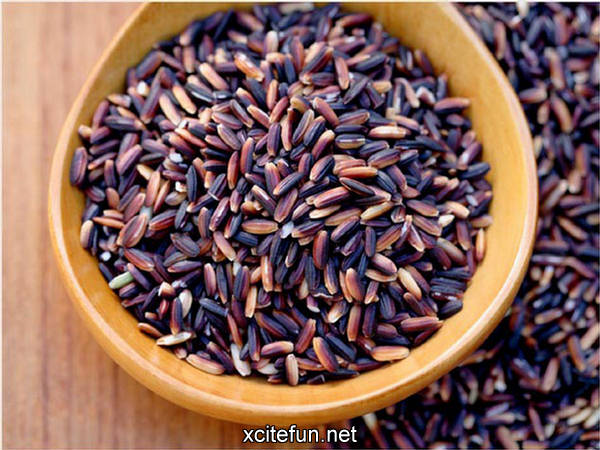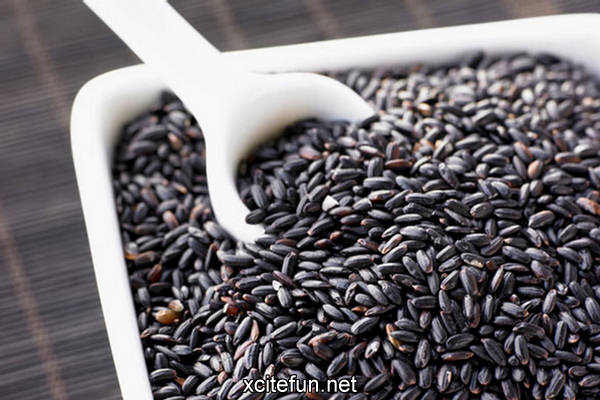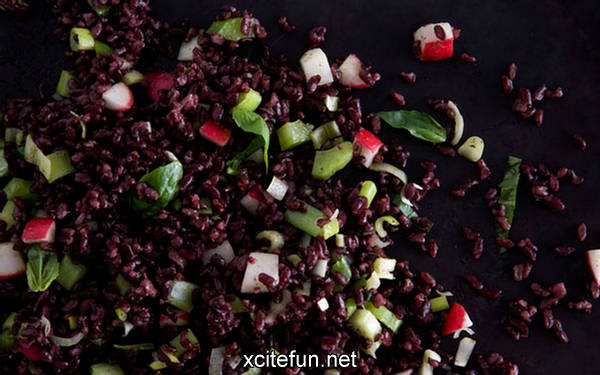Black Rice is one of several black-colored heirloom plants producing rice variants such as Indonesian black rice, of which Forbidden Rice is a strain. High in nutritional value, black rice is rich in iron. Unlike other black rice from Asia, it is not glutinous or rough. This grain is high in fiber and has a deep, nutty taste.

Black forbidden rice is so named because originally it was considered the Emperor's rice and was literally forbidden for anyone else to eat it.

It is a deep black color and turns deep purple when cooked. Its dark purple color is primarily due to its high anthocyanin content. It has a relatively high mineral content (including iron) and, like most rice, supplies several important amino acids.

China have recently begun black rice noodles to be produced. At least one United States bread company has also begun producing "Chinese Black Rice" bread. It shares the deep tyrian color of cooked black rice.

According to a study presented at the 240th National Meeting of the American Chemical Society (ACS), "one spoonful of black rice bran contains more anthocyanin antioxidants than a spoonful of blueberries and better yet, black rice offers more fiber and vitamin E antioxidants, but less sugar."






